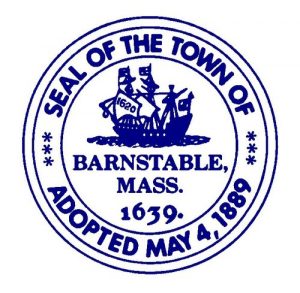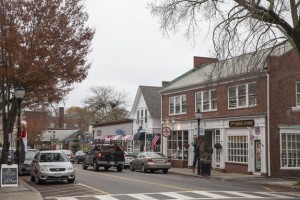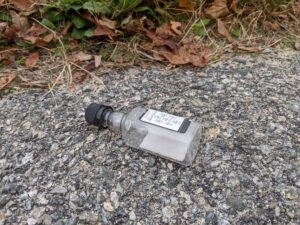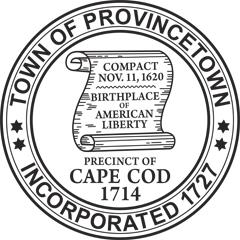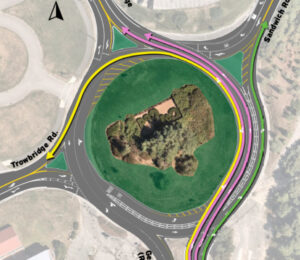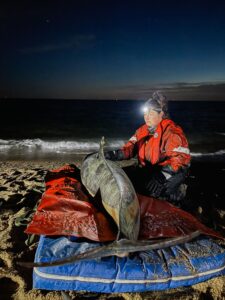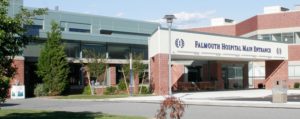 HYANNIS – In the basement of Falmouth Hospital sits a block of four rooms where patients sleep while technicians in an adjoining space oversee a host of inputs monitoring their sleep patterns. This is Cape Cod Healthcare’s Sleep Lab, and growing awareness of the seriousness of sleep apnea and its involvement in cardiac and other ills is driving more doctors to send their patients to the facility for diagnosis.
HYANNIS – In the basement of Falmouth Hospital sits a block of four rooms where patients sleep while technicians in an adjoining space oversee a host of inputs monitoring their sleep patterns. This is Cape Cod Healthcare’s Sleep Lab, and growing awareness of the seriousness of sleep apnea and its involvement in cardiac and other ills is driving more doctors to send their patients to the facility for diagnosis.
“We are booked up three to four weeks ahead,” said the lab’s medical director, Mir F. Shuttari, MD, a pulmonologist with a board certification in sleep medicine.
Unlike privately operated sleep labs, the Falmouth facility is the only one in the region connected to a hospital. If any medical issues arise, a patient could easily be transported to the emergency department within the hospital to receive immediate care, Dr. Shuttari said.
[RELATED: Is your snoring driving your sleeping partner away?]
Unlike sleep apnea studies performed by patients in their homes with a portable monitor mailed to them with a set of instructions, a sleep study in the lab collects more sources of data that are immediately interpreted by trained sleep medicine technicians. Furthermore, if breathing issues are identified midway through the night, those technicians can treat the problem during the second half of the night with a CPAP (continuous positive airway pressure) mask, he said. This device assists breathing by keeping the patient’s airway open.
Sleep apnea – the repeated cessation of breathing for short periods during sleep – has been linked to potentially fatal illnesses, such as irregular heartbeats, congestive heart failure, heart attack and stroke, as well as contributing to high blood pressure, depression and obesity. Symptoms include snoring, a shirt neck size 17 or larger, gasping during sleep, and sleepiness during waking hours, according to the National Heart, Blood and Lung Institute.
Fifty percent of patients with congestive heart failure also have sleep apnea, Dr. Shuttari said. Congestive heart failure occurs when the heart becomes less effective at pumping blood, and the kidneys respond by making the body retain more salt and water, so fluid builds up in the lungs and extremities. Experts disagree whether sleep apnea causes congestive heart failure or congestive heart failure causes sleep apnea, but the two conditions are closely associated, he said.
“It’s kind of a chicken or egg situation,” Dr. Shuttari said.
The Process
In addition to sleep apnea, the sleep lab can diagnose, study and treat
- Narcolepsy, which causes a person to fall asleep involuntarily
- Restless leg syndrome, which may manifest in an irresistible urge to move the legs and broken sleep from leg movements
- Sleepwalking, when a person gets up and moves about while sleeping
- Insomnia, or difficulty getting or staying asleep.
Once a patient arrives at the Sleep Lab, they are taken to one of the four rooms, which somewhat resemble hotel rooms, though without windows. There, patients change into pajamas and a technician hooks them up to a variety of leads and devices. A thick, paste-like substance is used to attach some of the electrodes to the scalp and face. It can be scrubbed off with soap and water the following morning. A harness of wires is hung around the neck.
The wires of two electrodes are passed down to anchor one on each leg. A blood oxygen sensor is clipped to a finger and belts go around the waist. Then, the patient may read or watch TV until ready to turn out the lights and go to sleep.
According to Dr. Shuttari, these leads and devices include an electroencephalogram or EEG, which tracks three channels of brain wave activity. The EEG shows if a patient is going to sleep and the stage of sleep they’re in. Another device, the electrooculogram, measures eye movements and helps confirm if the patient is in a dream state.
The temperature of air exhaled from the nose is warmer than air being inhaled. A temperature sensor measures it to see if breathing continues throughout the study.
“If it (cessation of breathing) happens for more than 10 seconds, then it is apnea,” Dr. Shuttari said.
A flow sensor also monitors nasal air pressure. Abdomen and chest belts detect the degree of effort a patient makes to breathe. These devices can help determine if sleep apnea is obstructive — caused by the tongue or other tissue blocking air flow, or central — caused by the brain sending incorrect impulses to the nerves controlling breathing.
Sensors on the arms and legs detect movement, as does one on the chin, as the lower jaw moves during sleep. Body position sensors show if a patient sleeps on their back or side.
An electrocardiogram, or EKG, traces heart rhythms during sleep. A video camera and a microphone allow the technicians to record any significant sights or sounds, such as snoring.
Finding Qualified Staff
“The technology keeps growing,” Dr. Shuttari said, adding that the field of sleep medicine has evolved in the past 25 to 30 years from when it was the province of neurologists and scientific researchers. The realization that breathing problems during sleep can cause major illness transformed the field and, about five or six years ago, the America Board of Internal Medicine put it in the hands of certified clinical sleep medicine doctors and trained technicians, he said.
The biggest challenge of continuing to meet the growing demand for the sleep lab is finding qualified staff, Dr. Shuttari said.
“Down the road, we may have to start a school to train sleep technicians,” he said.
Nurses, respiratory therapists, and holders of some bachelor’s degrees can become certified technicians with about a year of instruction followed by an internship – a total commitment of one to two years, Dr. Shuttari said. There is no nearby source for this training, he said.
There are two paths to technical certification. One option is to become a registered sleep technologist by taking an 80-hour course and passing the exam offered by the American Board of Sleep Medicine.
More demanding is the second option, a two-step process overseen by the Board of Registered Polysomnographic Technologists (BRPT). An entry-level candidate first must qualify to be a certified polysomnographic technician, which includes certification or equivalent in basic life support. However, this status is lost if the candidate doesn’t complete work in the field to become a registered polysomnographic technologist within 3 years, according to the BRPT.





